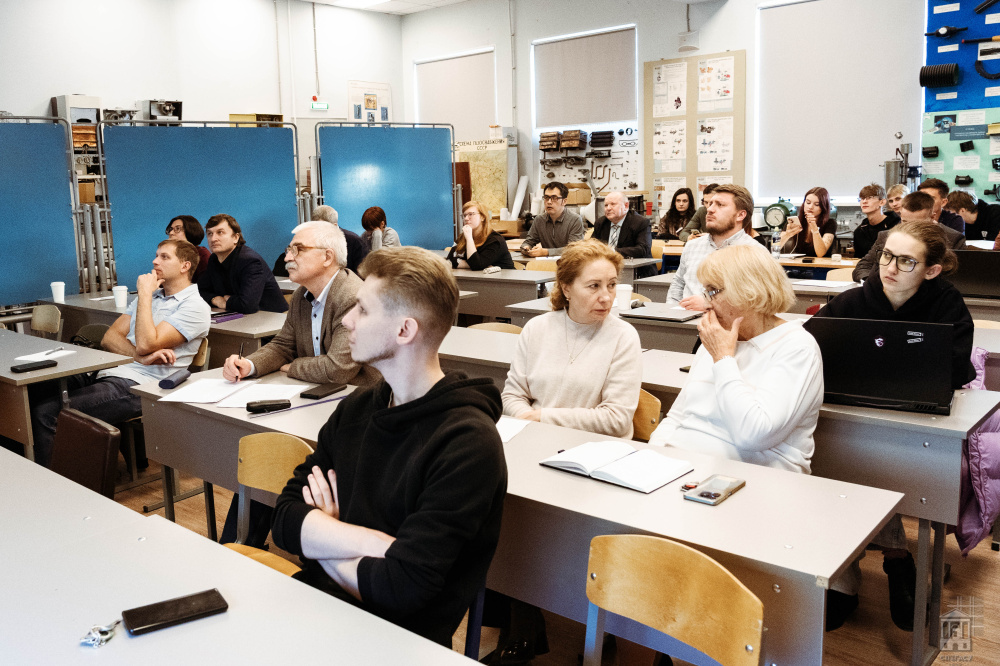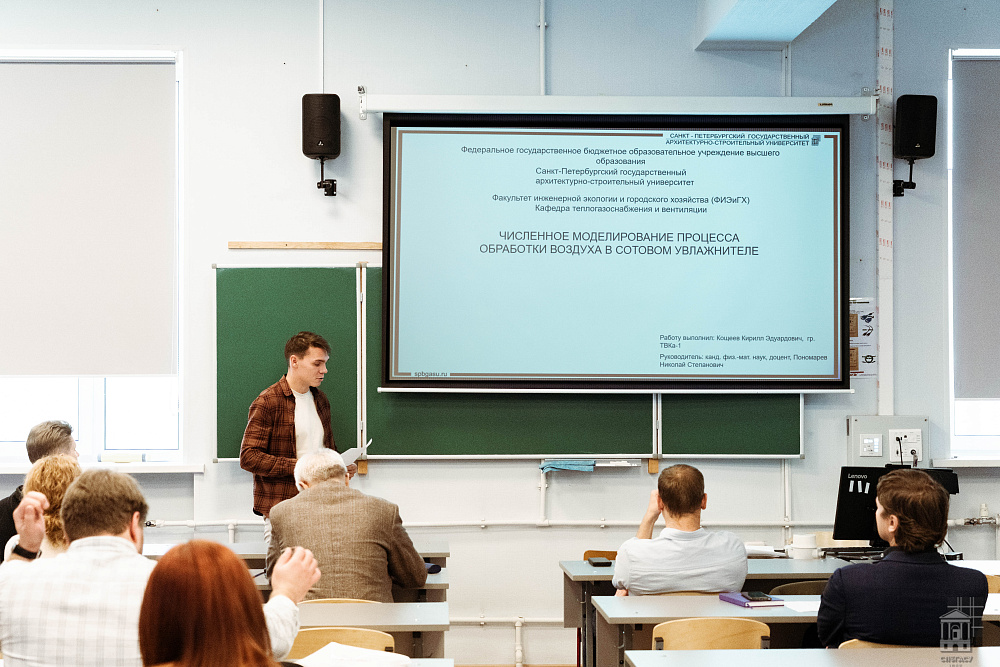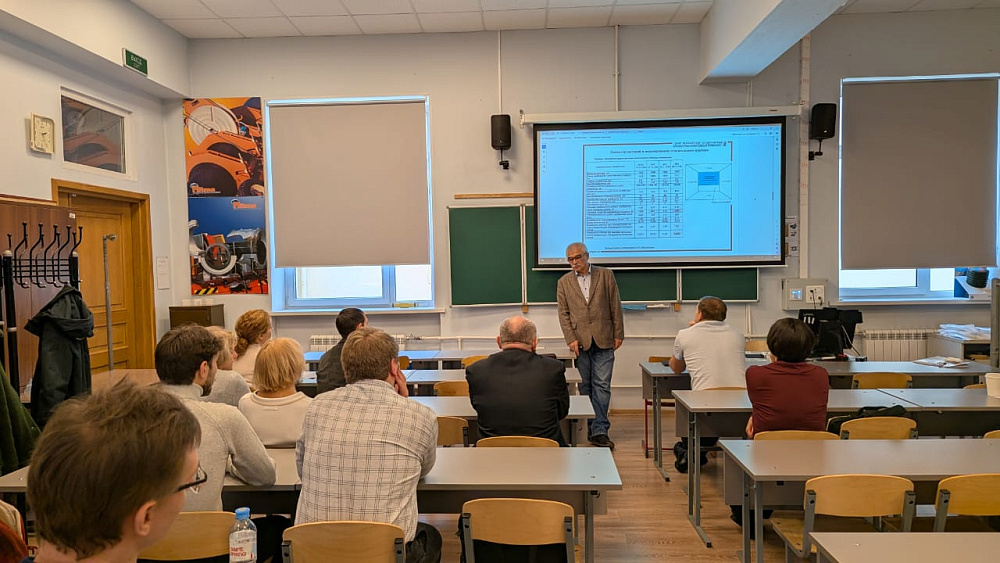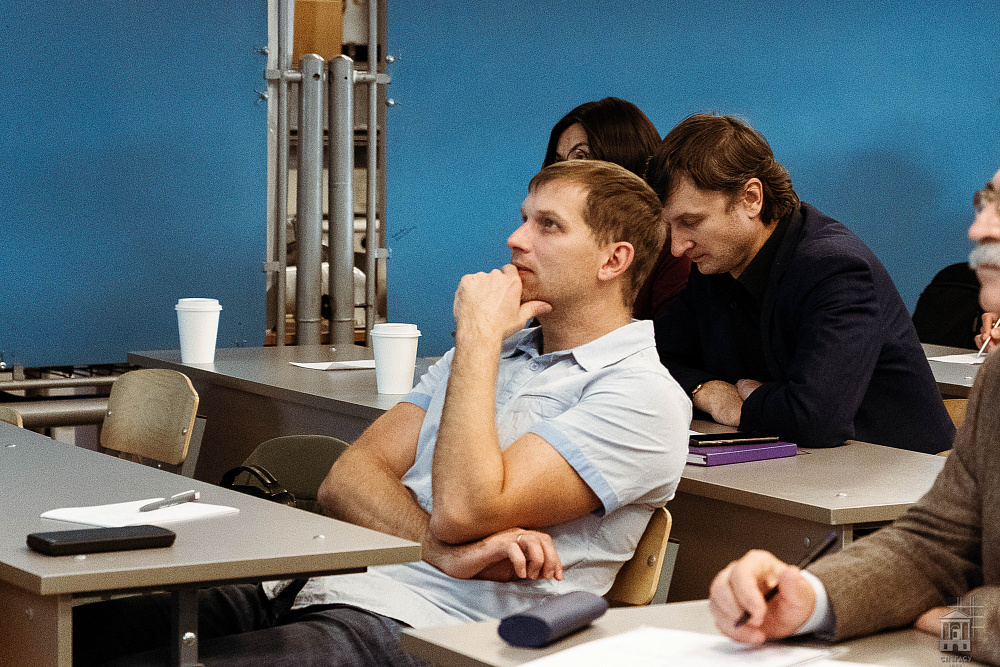 Symposium audience
Symposium audience
On 20 and 21 October, the SPbGASU Department of Heat and Gas Supply and Ventilation held the National (All-Russian) Symposium "Numerical Modeling in Climate Systems". The event brought together scientists, academic staff, and specialists from various Russian cities, including St Petersburg, Kazan, Moscow, Voronezh, Belgorod, Kursk, and Ukhta.
Symposium participants discussed current studies in the field of numerical modeling of heating, ventilation, air conditioning, and gas supply systems. Topics covered included the prospects for using numerical modeling in the design of heating, ventilation, and air conditioning systems, the development and verification of a numerical model for radiative-convective heat transfer in a long radiant heater, the use of user-defined flow functions (UDFs) in numerical analysis of tube deposits in convective bundles of water-tube boilers, and a post-processing algorithm for numerical modeling results for quantitatively assessing laminar flow in clean rooms.
The symposium opened with a report by Arslan Ziganshin, DSc in Engineering and Head of the Department of Information Systems and Technologies in Construction at the Kazan State University of Architecture and Civil Engineering. He presented a study of the flow in the "elbow-symmetrical tee" ventilation system unit and proposed solutions for increasing its energy efficiency.
Andrey Kolosnitsyn, CEO of MM-Technologies LLC, addressed the pressing issue of transitioning to domestic software. In his presentation, he analyzed the strengths and weaknesses of Russian programs FlowVision, Logos, and CadFlo, as well as their development prospects for science and practice.
The Ural Federal University specialists presented the results of a comparison of gas dynamics and heat transfer calculations for air ducts using ANSYS CFX and SimFlow software to develop an engineering modeling method.
Kristina Kocharyantz, Research Director and Head of the Aerodynamics and Acoustics Research Laboratory at Arktos LLC, addressed a pressing issue for numerical modeling specialists. She discussed the specifics of developing and optimizing air diffuser models for numerical calculations of indoor microclimates. Many undergraduate and graduate students simplify their numerical models in places such as air inlet areas near ventilation grilles and diffusers, which is often erroneous, as it yields incorrect air distribution calculations. The report presented the results of an analysis of various air diffusers with recommended boundary conditions and described options for optimizing numerical models for various cases.
Egor Aralov, a PhD student at Southwestern State University, addressed the pressing issue of gas infrastructure safety. His presentation focused on digital technologies for monitoring the condition of low-pressure gas pipelines in extremely cold conditions, which significantly improves their reliability.
Teachers and students from Moscow State University of Civil Engineering presented joint work: Associate Professor Elena Belova and student Vyacheslav Vlasenko reviewed mathematical models of air dehumidification, while Associate Professor Sergey Tikhomirov presented the results of a numerical study of the influence of radiator geometry on the laminar-turbulent transition.
PhD and master's students from the SPbGASU Department of Heat and Gas Supply and Ventilation shared the results of their research.
The scientific program concluded with a presentation by Tamara Datsyuk, DSc in Engineering, Professor at the SPbGASU Department of Structural Physics, Power Engineering and Electrical Engineering. She summarized twenty years of experience using numerical modeling at our university.
The symposium concluded with a roundtable discussion, where participants had the opportunity to informally discuss the topics raised and identify ways for further collaboration. The event served as an important platform for exchanging experiences between leading experts, young scientists, and industry representatives.







